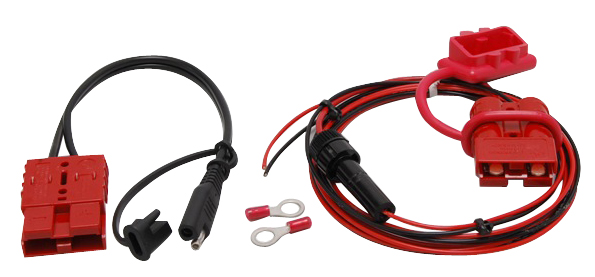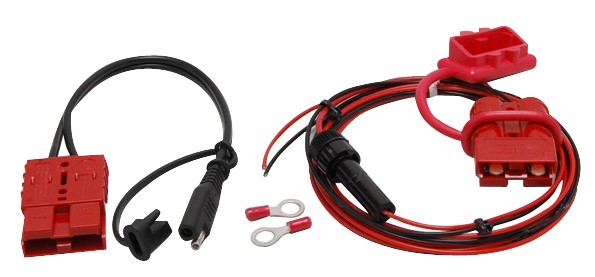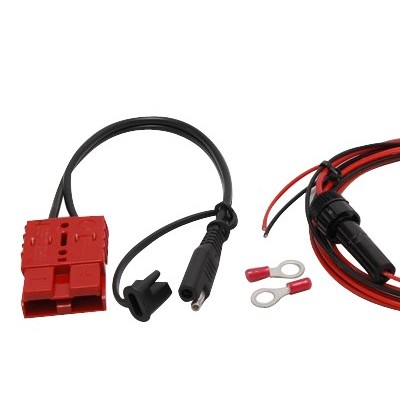
Product presenation:
The consumer-grade wire harness and temperature sensor supplied with the BatteryMINDer do not qualify for installation on FAA certified aircraft under FAA regulations 14 CFR 21.9. They suitable for and may be used for bench charging, but cannot be legally installed on the aircraft.
This kit provides standard aircraft parts acceptable under 21.9 for a FAA certificated mechanic to fabricate and attach a fused, 2-wire harness to a certified aircraft lead acid storage battery, for the purpose of connecting an aviation-specific BatteryMINDer brand of low-current, continuous-duty, maintenance-type battery charger. The finished harness typically has ring terminals at the battery connecting to a Anderson SB50 polarized plug at the opposite end by up to 6 feet of MIL-spec unshielded 16-gauge aircraft wire, with a 10-amp in-line fuse. An insulating dust cover protects the plug when not connected to the charger.
This kit can be installed as a minor alteration under 14 CFR 1.1 and 21.93(a) as it has o appreciable effect on the weight, balance, structural strength, reliability, operational characteristics, or other characteristics affecting the airworthiness? of the aircraft. No Form 337 submittal or FSDO field approval is required per FAA Order 8900.1 Figure 4-67. A ?43.9 airframe logbook entry is sufficient to document this alteration and return the aircraft to service.
This kit also includes a short harness to adapt the charger SAE output connector to a mating Anderson SB50 plug. This harness is connected to and remains with the charger. It is not installed on the aircraft.
Finally, the BatteryMINDer At-the-Battery Sensor (ABS-248) should not be installed on FAA certified aircraft. Instead, temperature compensation is best accomplished by contacting VDC Electronics to obtain an ambient temperature sensor that plugs into the charger. Alternat





 企业站手机版
企业站手机版